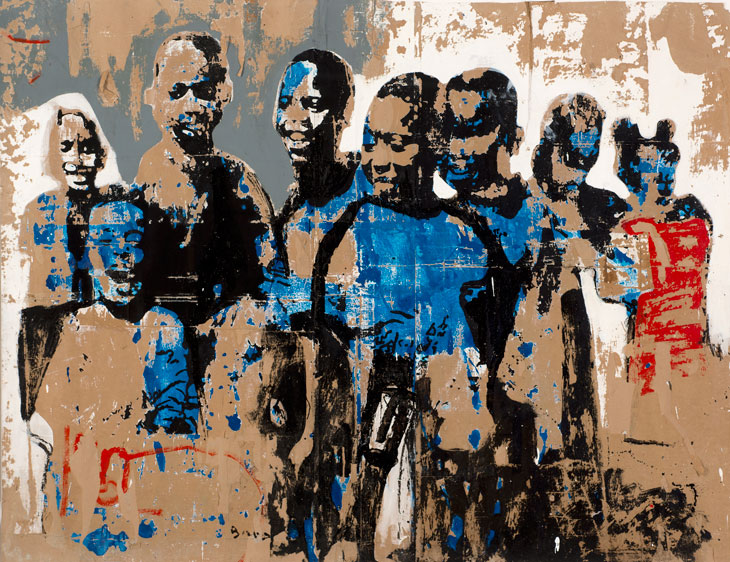
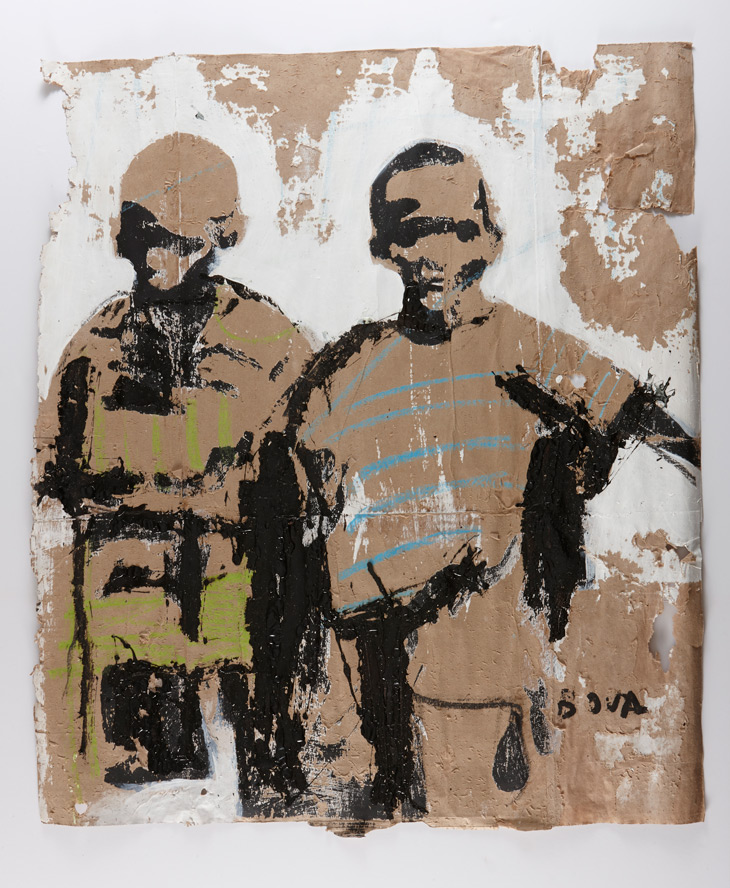
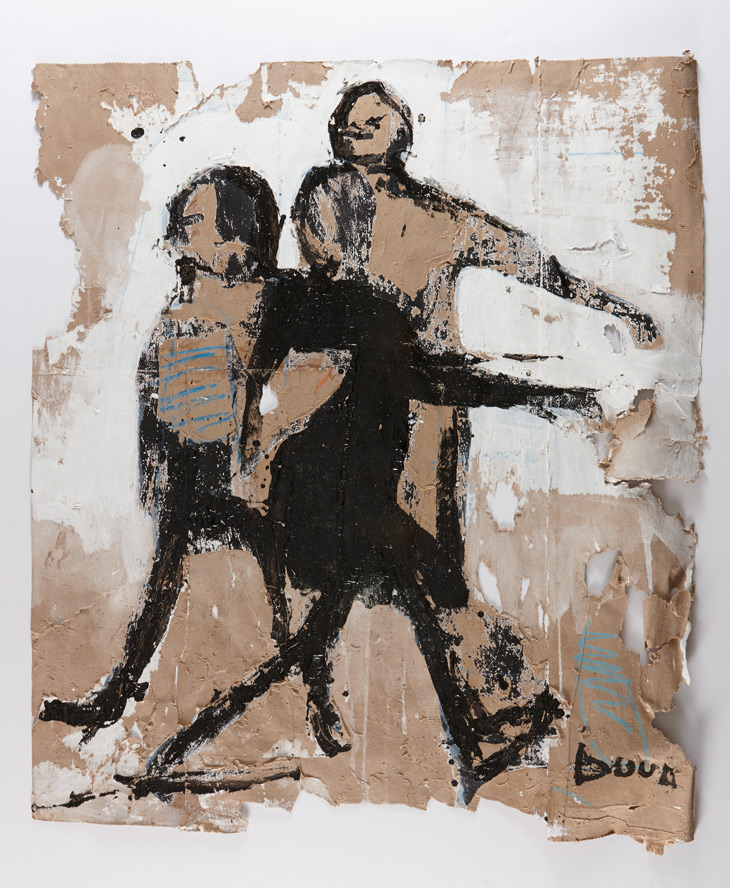
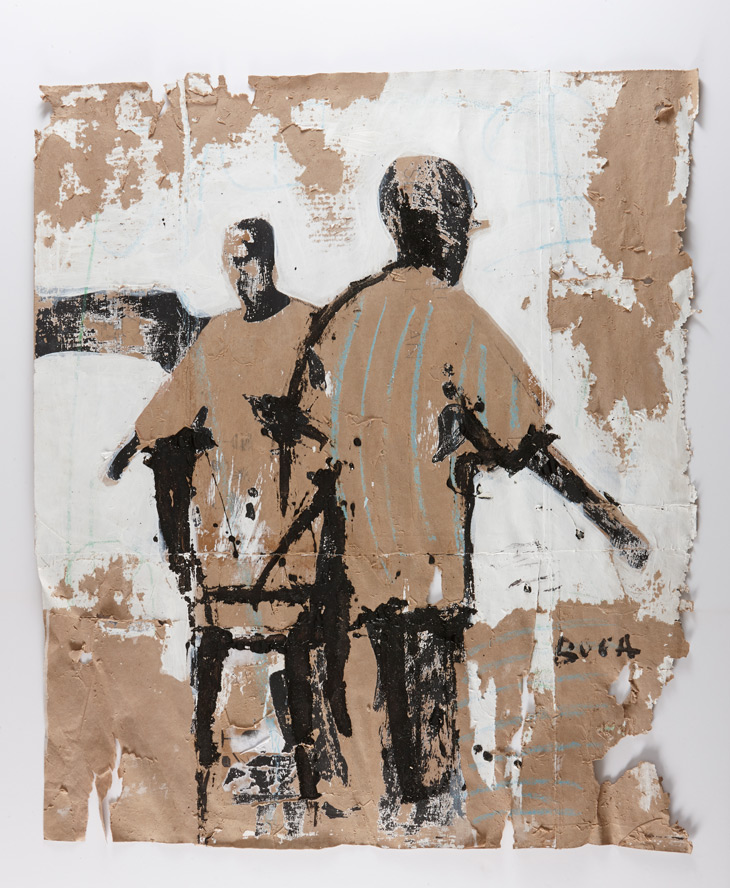
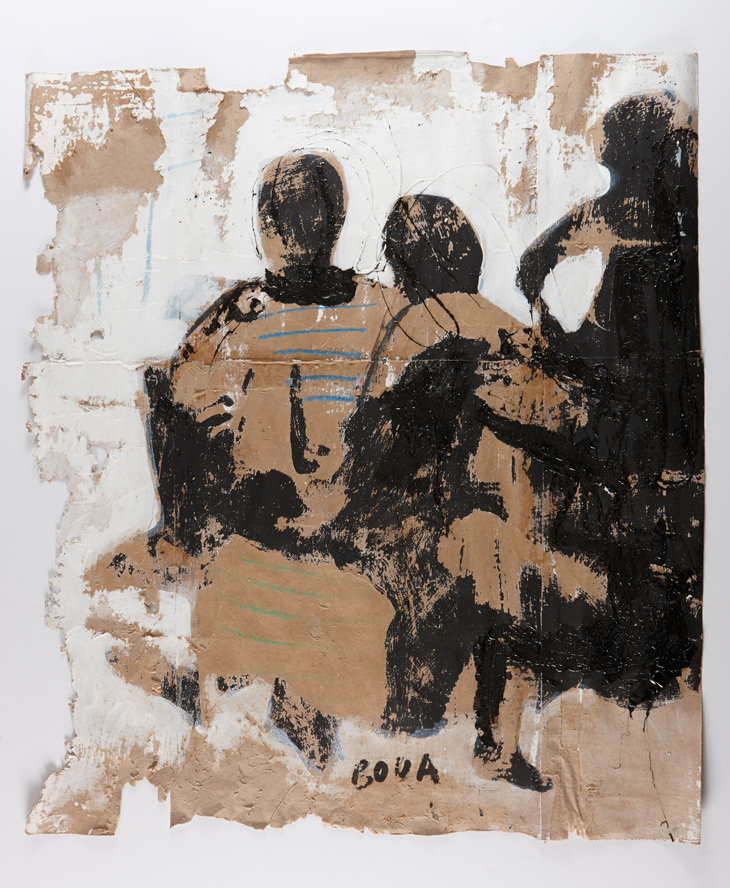
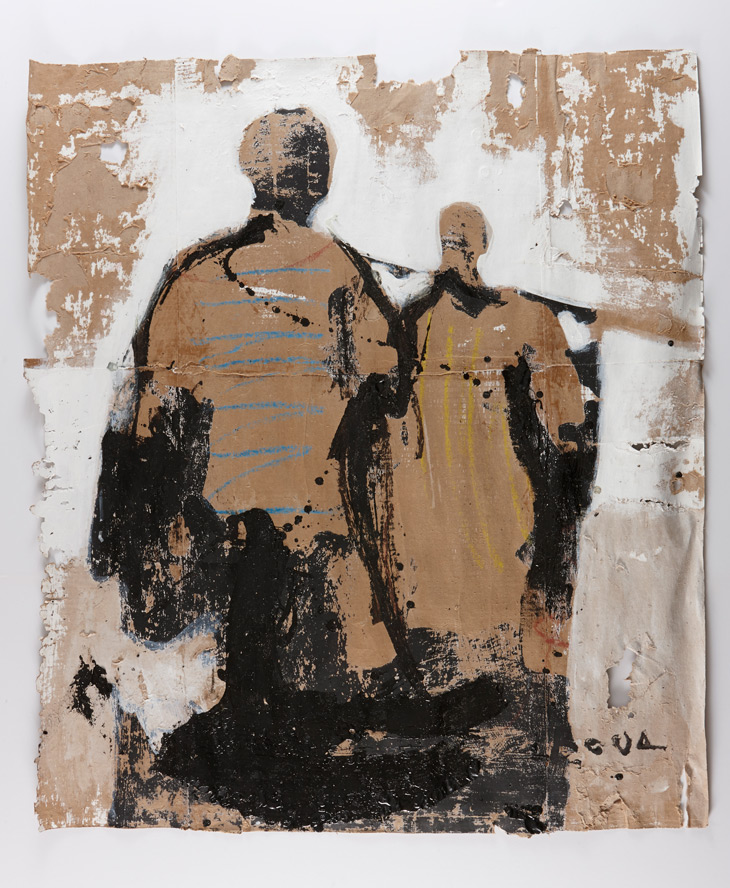
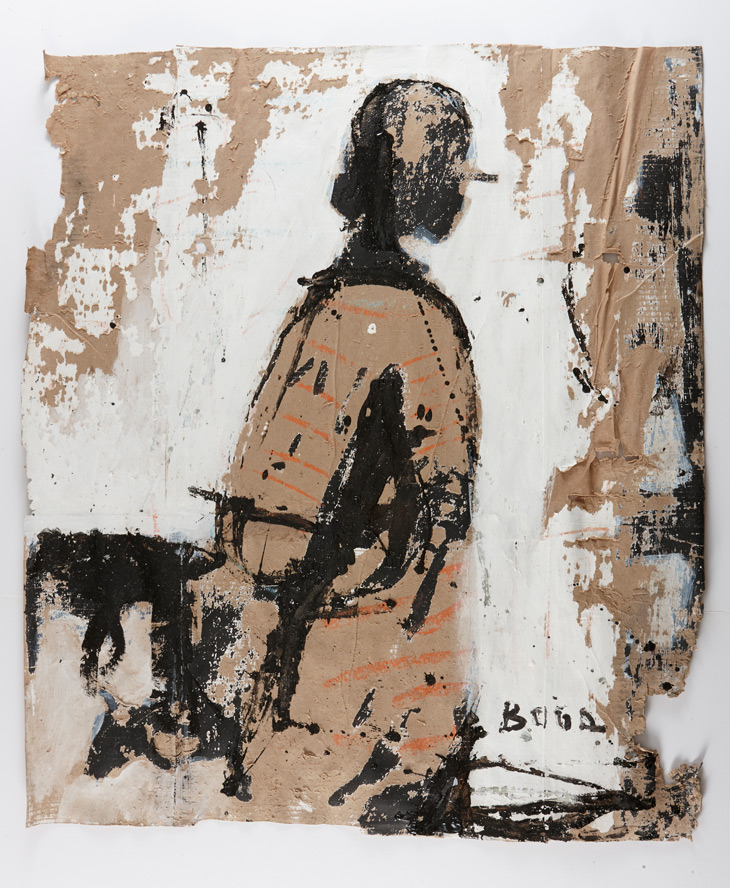
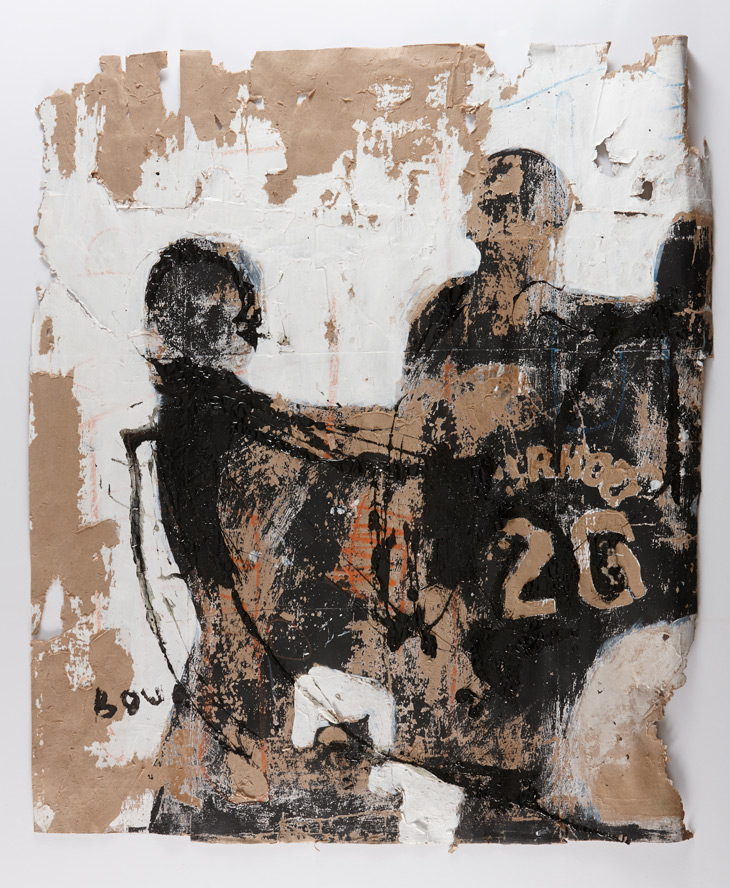
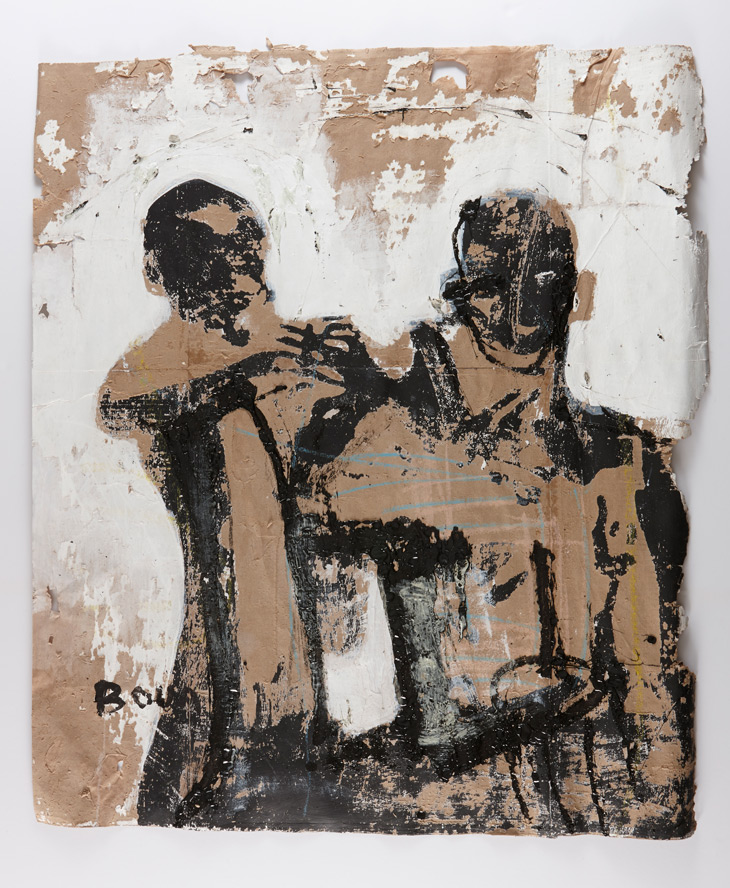
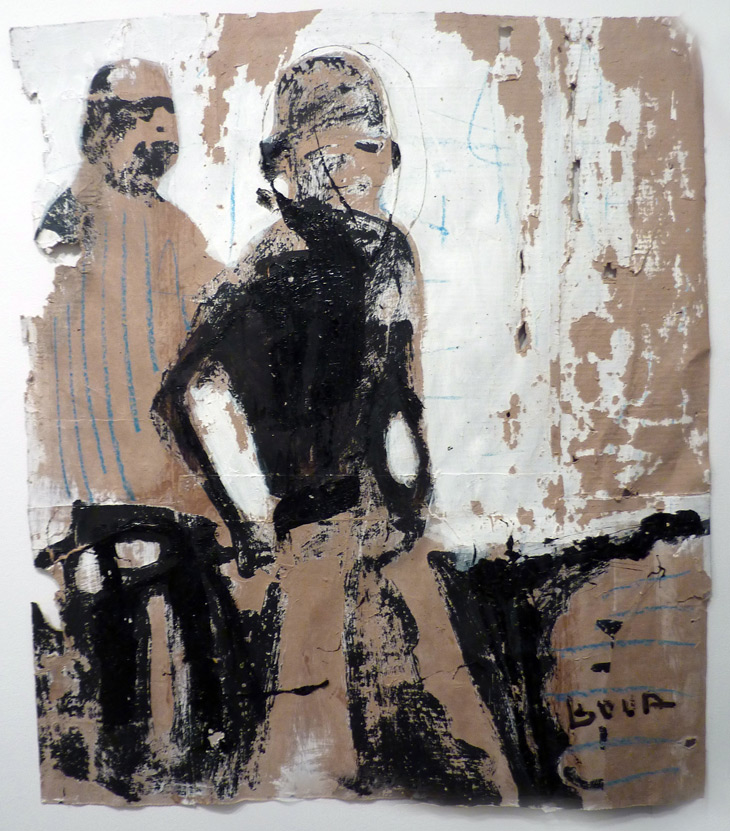
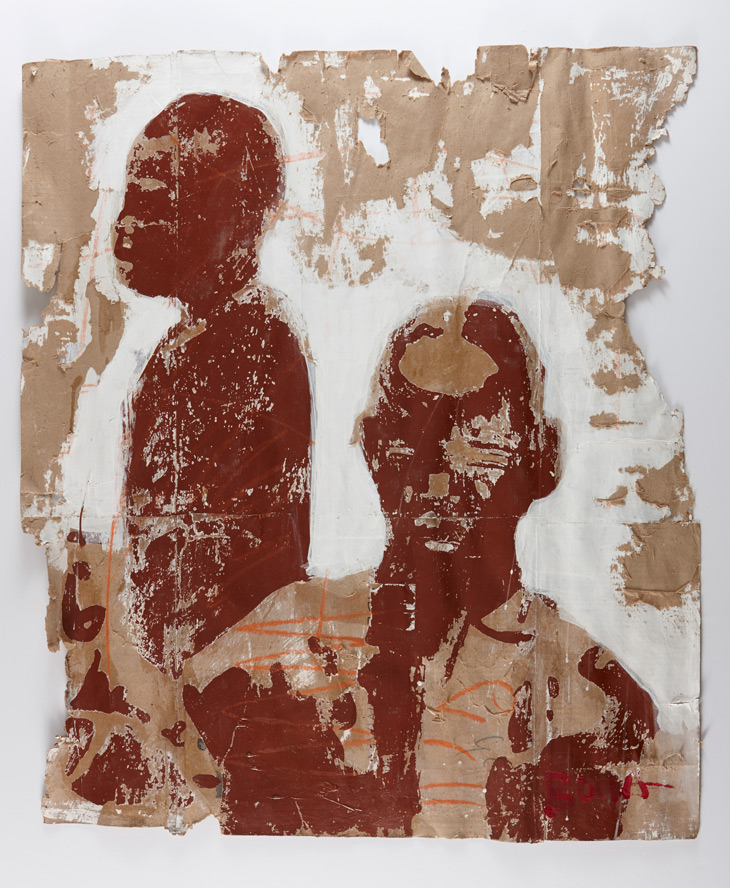
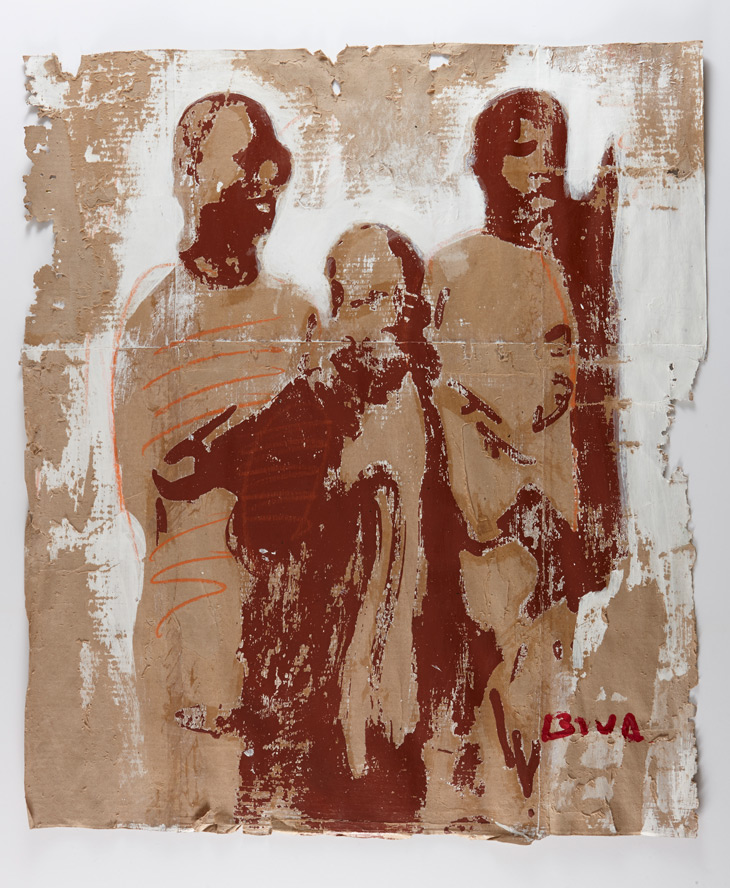
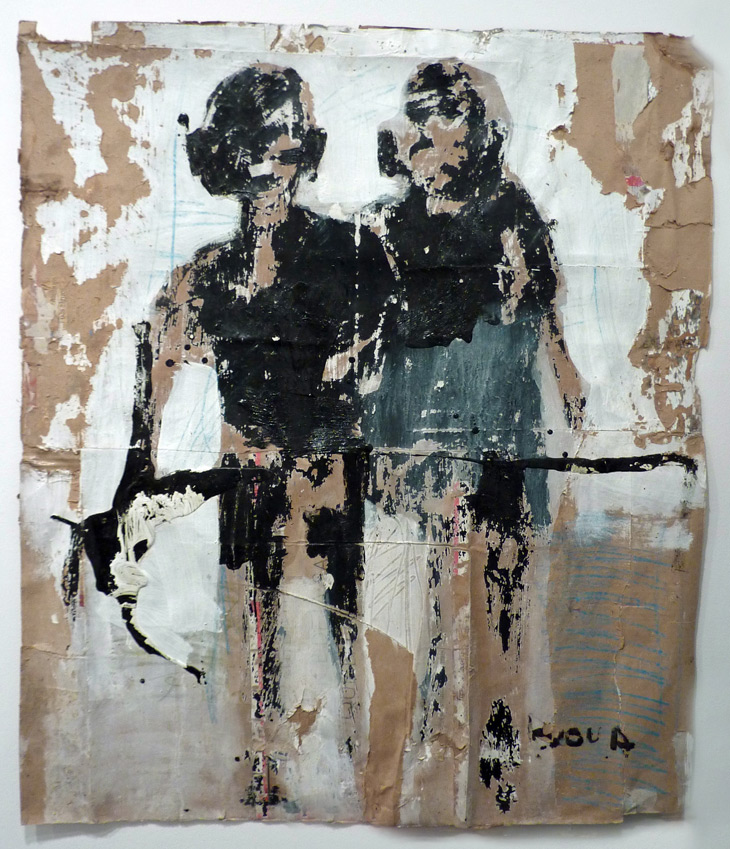
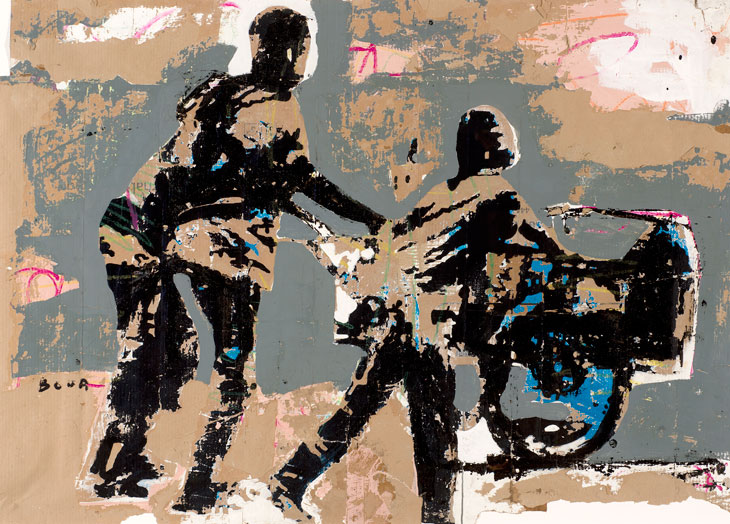
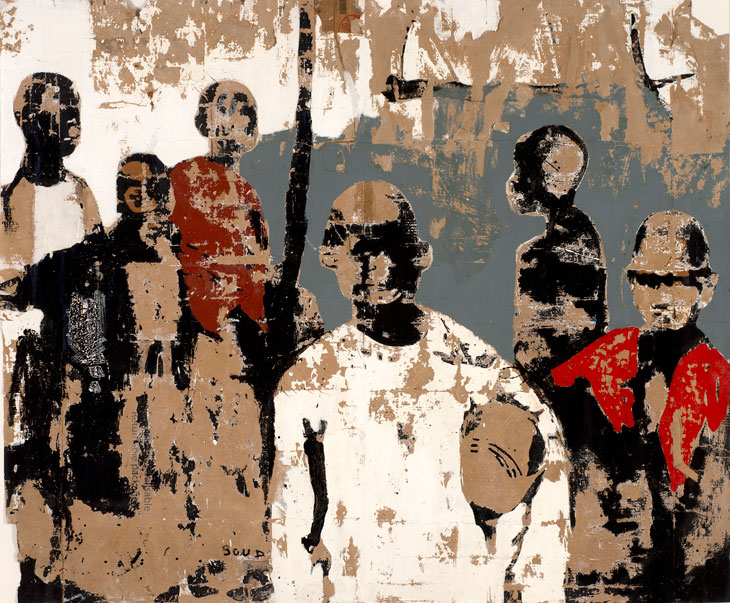

Armand Boua
In Cote d’Ivoire, where child abduction remains a chillingly real issue, myths of human sacrifice and other rituals fuel a market for the organs of the young, who also fall victim to sex trafficking, illegal adoption rings and plantation labour.
Congregating in densely urban centers, Boua’s subjects could well be victims of such exploitation, or symbols of hope and innocence. Nonetheless, what is known is that they’re lives are undoubtedly susceptible to the dangers of this volatile world. The severity of this crisis foreshadows the practice of the street-based artist, who sees the atrocities of man echoed in everyday life, and gives them shape through poetic forms and emotive expressions.
Often applying his imagination to flattened cardboard boxes (Untitled Series,2013), Boua overlays acrylic and tar, before tearing, scratching and marking the surface, as if to erase the memory of an action. These paintings reveal a visual plane disrupted by torn memories, the surface deteriorated to deliberately unsettle the image. The poeticism of Boua’s art is located in the artist’s indifference towards accurate description, as well as his disregard for the formal qualities of painting. On one hand, gestural marks recall the totalising nature of abstract expressionism; only Boua’s paintings are never truly resolved since they are always marred by the impossibility of uniting violence and memory. On the other hand, his cardboard surfaces could be thought of as placards of a revolution in protest against forgetting. Ultimately, they seem to trace the lives that society pretends not to see, the precarious lives of those most vulnerable.
Armand Boua deals with the human condition, as a response to the inhumanity he sees in the world around him. His recent works, depicting the formless figures of forgotten children, testify to the violence that continues to characterise the political struggles of West Africa. His aesthetic is one born out of an engagement with found material, to which he applies his signature forms that evoke images and scenes in remembrance. Working in Abidjan, the economic capital at the crossroads of urbanisation and industrialisation, Boua experiences the Ivorian landscape with a heightened sensitivity. His observations of children are drawn largely from street scenes where urban migrations create ethnic, linguistic, cultural and social entanglements that have come to enrich and problematise the region in equal measure.
© Osei Bonsu, 2014















